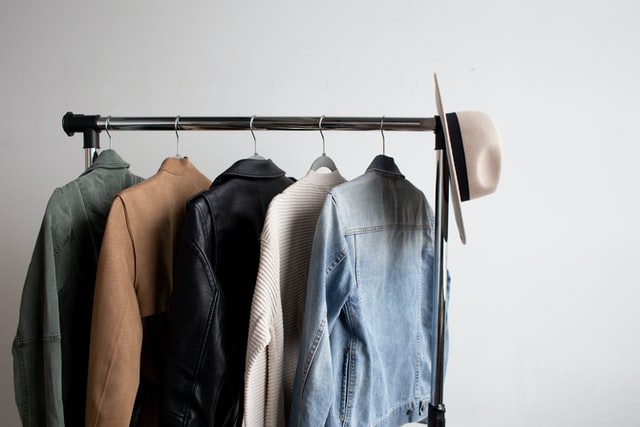How much should you be spending on clothing?

Many financial experts recommend spending around 5% of your monthly salary on clothing. For example, if you take home £2500 after taxes, spend around £125 a month on clothes (calculated by multiplying 2500 by 0.05).
If you are in the dark about your clothes spending habits and want to get a useful insight into the clothing categories you spend the most on, it is best to try and visualise this.
With a graph like the one below, it is straightforward to see the monthly clothing spend, a breakdown on where clothing is being purchased as well as any spending changes over the months.

Zara and H&M are the most frequently places that clothes are purchased from in all the four months of data. Something to consider when next in either of these stores.
Losing track of spending over time
It is easy to lose track on how much we are spending on clothes over time. The relatively small purchases can build up to a substantial cost without you even realising. To help keep us informed about the total spend for each of these shops so far, the following bar chart can help:

Such a graph reveals that there is are two shops with a considerably larger spend than the others - ASOS and Zara. This might not be so obvious from glancing at your bank transactions on paper.
When looking to buy new clothes next time, having your own personalised graphs in the back of your mind can help you refrain from purchasing more clothes.

Transform your monthly expenses into insightful visualisations.
Start building your financial tracker with our online course.
Learn more →The following bar chart illustrates an example spend on various clothing sub-categories:

In this chart, we see a lot more is spent during the winter months where jumpers (brown bar) and coats (red bar) are contributing most to the monthly clothing spend.
Seeing first-hand how much we spend on certain clothing can make us to think twice before spending more and helps prevent impulse clothes purchases.
How can I start saving money on clothes?
A great bargain can be had at charity shops!
While there is a high chance to find something that you like, it is best to approach charity shops with an open mind. Rather than going to the charity shop with intention to buy a specific item, instead look for items that will go well with your current wardrobe.
Instead of buying brand new clothes for special occasions that you likely won’t wear frequently, is to ask around friends and family. Borrowing and swapping clothes with each other will be a cost-effective approach and it will better for the environment as you’re re-using garments.
Revitalise wool garments
Are you considering replacing clothes such as wool coats and jumpers because they look old with several frays or ‘bobbles’ visible?
Why not buy a bobble remover that can help revitalise your old garments and make them appear almost new! A cost of a bobble remover is much less than buying a new wool coat and it is also a good investment for the future too.



